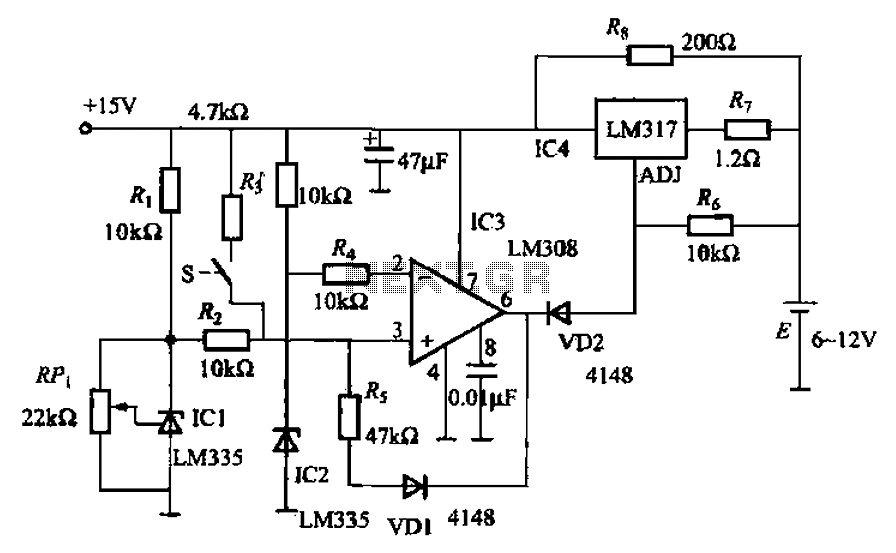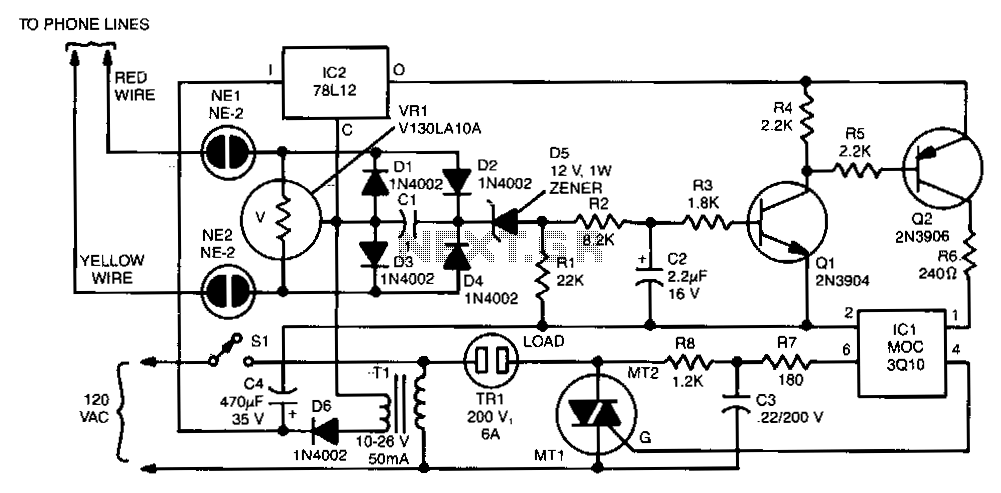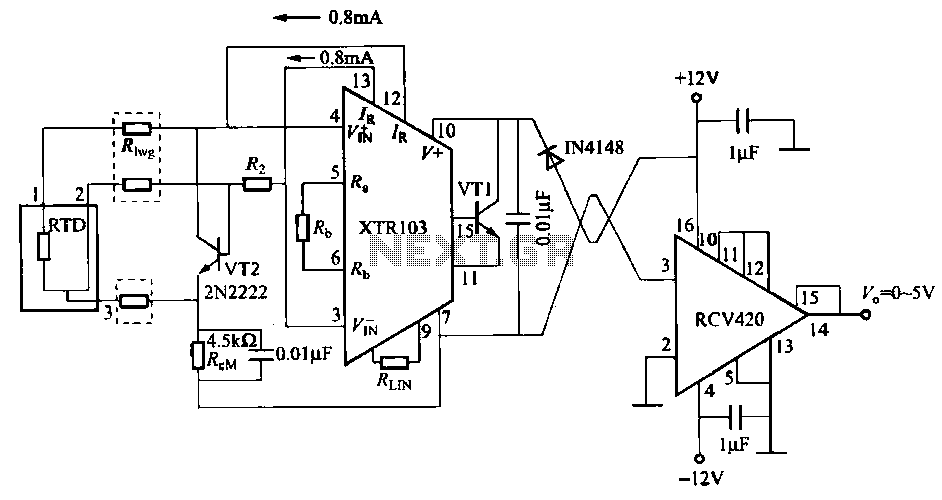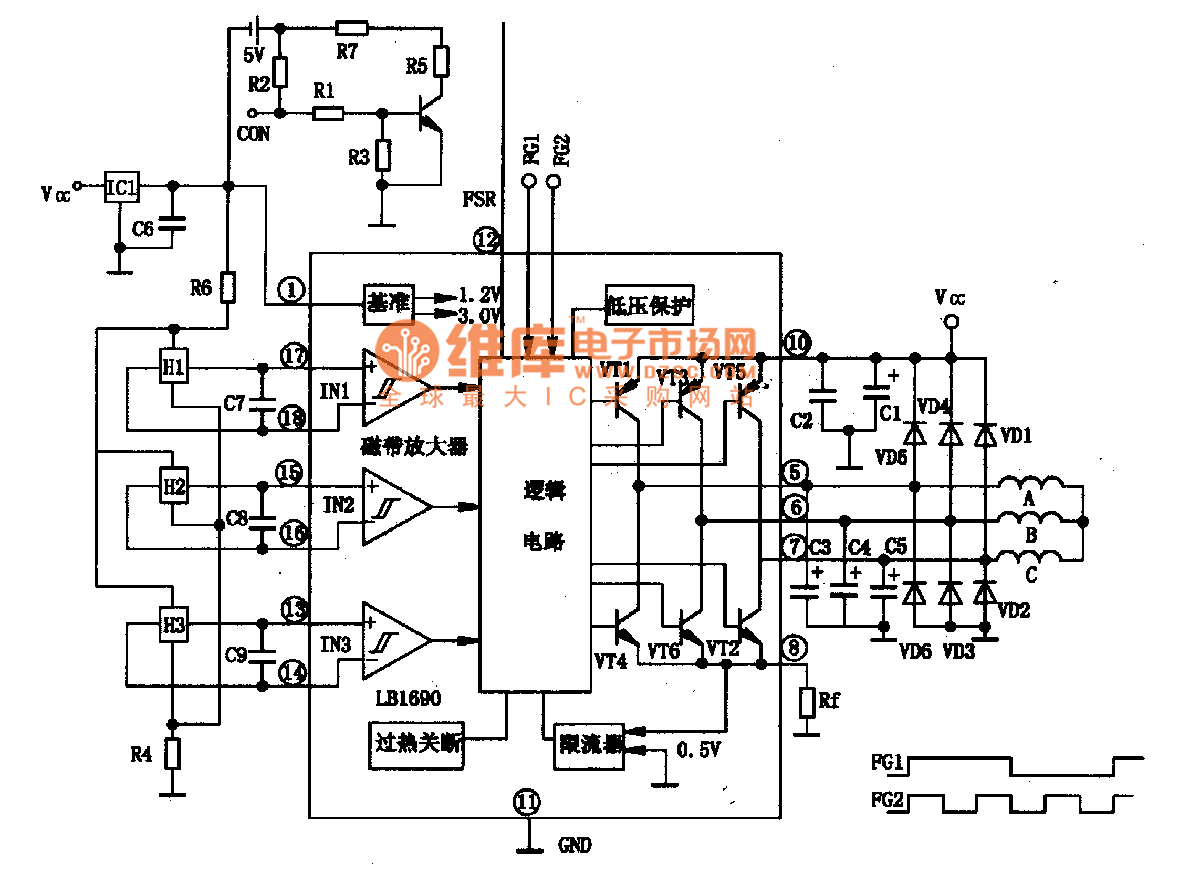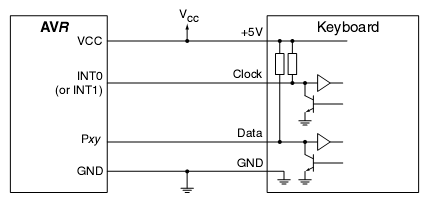
200 meters remote control schematic design
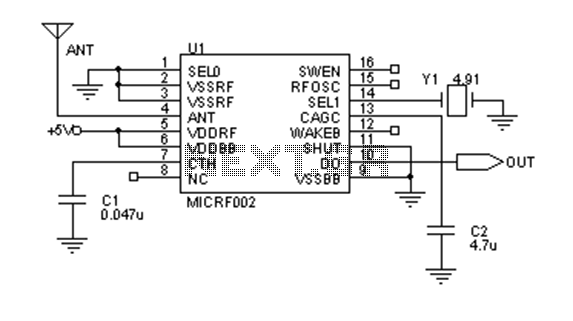
Early transmitters using LC oscillators experience significant frequency drift. The introduction of Surface Acoustic Wave (SAW) devices addresses this issue, providing substantial frequency stability comparable to crystals. These devices can achieve fundamental frequencies in the hundreds of megahertz or even gigahertz range. Compared to crystal oscillator circuits, the design is considerably simpler. The following two circuits illustrate common transmitter applications that utilize SAW devices, ensuring high stability. Even when handling the antenna or other circuit components, the transmission frequency remains stable. Additionally, the transmission power is greater than that shown in Figure II, with a range of up to 200 meters. The ICRF002 ceramic resonator can be replaced with different resonators to cover reception frequencies from 300 to 440 MHz. The MICRF002 operates in two modes: scan mode and fixed mode. In scan mode, it accepts bandwidths of several hundred kilohertz, primarily used to support LC oscillators and transmitters, which are prone to frequency drift. The data communication rate in this mode is 2.5 KBytes per second. In fixed mode, the bandwidth is limited to tens of kilohertz, suitable for crystal-stabilized transmitters, allowing data rates of up to 10 KBytes per second. The selected operating mode is controlled via pin 16 (SWEN) of the MICRF002. Furthermore, it features a wake-up function to activate the decoder or CPU, minimizing power consumption. The MICRF002 is a complete monolithic superheterodyne receiver circuit that allows direct antenna input, with a typical receiving range of 200 meters.
The circuit design of early transmitters often relied on LC oscillators, which are known for their susceptibility to frequency drift due to environmental factors such as temperature changes and mechanical vibrations. The introduction of Surface Acoustic Wave (SAW) devices revolutionized this aspect by providing a more stable frequency output. SAW devices utilize the piezoelectric properties of certain materials to generate and manipulate acoustic waves, offering improved frequency stability that rivals traditional crystal oscillators.
The schematic for the transmitter circuit employing SAW devices typically includes the SAW resonator, which is integrated into the oscillator circuit. This integration simplifies the design, reducing the number of passive components needed compared to conventional crystal oscillator circuits. The stability of the frequency output is crucial, especially in applications where the transmitter may be subject to physical handling or environmental changes.
In the case of the ICRF002 ceramic resonator, its ability to be interchanged with other resonators enables versatility in tuning the reception frequency range from 300 to 440 MHz. This flexibility allows for adjustments based on specific application requirements, such as regulatory compliance or operational range.
The MICRF002 is designed for efficient operation in two distinct modes. In scan mode, the circuit can handle wider bandwidths, making it suitable for applications that require rapid frequency adjustments, such as in frequency-hopping spread spectrum systems. The lower data rate of 2.5 KBytes per second in this mode is a trade-off for the increased bandwidth.
Conversely, the fixed mode provides a more stable operation with a significantly reduced bandwidth, ideal for applications that require reliable data transmission at higher rates of up to 10 KBytes per second. This mode is particularly advantageous for applications where the frequency drift of the transmitter is minimal due to the use of crystal stabilization.
The functionality of the MICRF002 extends beyond mere signal transmission; its wake-up feature is a vital component for low-power applications. This function allows the circuit to remain in a low-power state until activated, thereby conserving energy when the device is not in active use.
Overall, the integration of SAW devices in transmitter circuits, along with the operational flexibility offered by the MICRF002, exemplifies advancements in RF circuit design that enhance performance, stability, and efficiency in modern communication systems.Early transmitters use more LC oscillator frequency drift is more serious. SAW devices appear to solve this problem, the frequency stability of the crystal substantially the sa me, and its fundamental frequency of up to hundreds of megabytes or even gigahertz. Without octave, compared with the crystal oscillator circuit is extremely simple. The following two circuits for the common transmitter circuit, due to the use of SAW devices, the circuit is very stable, even when grasping the antenna, acoustic, or other parts of the circuit, the transmit frequency will not drift. And a compared with Figure II transmission power larger. Up to 200 meters. ICRF002 ceramic resonator and replace it with a different resonators, the reception frequency can cover 300-440MHz.
MICRF002 has two operating modes: scan mode and fixed mode. Scan mode accepts bandwidth of up to several hundred KHz, this mode is mainly used for the LC oscillator and transmitter supporting the use, because, LC transmitter frequency drift is large, in the scan mode, the data communication rate of 2.5KBytes per second. Fixed bandwidth mode only tens of KHz, this mode is used and the use of the crystal frequency stabilization transmitter supporting data rates up to every second 10KBytes.
The operating mode is selected by MICRF002 16 feet (SWEN) implementation. In addition, the wake-up function can wake up decoder or CPU, in order to minimize power consumption. After MICRF002 is complete monolithic superheterodyne receiver circuit, the basic realization of the antenna input data directly, receiving distance is generally 200 meters.
The circuit design of early transmitters often relied on LC oscillators, which are known for their susceptibility to frequency drift due to environmental factors such as temperature changes and mechanical vibrations. The introduction of Surface Acoustic Wave (SAW) devices revolutionized this aspect by providing a more stable frequency output. SAW devices utilize the piezoelectric properties of certain materials to generate and manipulate acoustic waves, offering improved frequency stability that rivals traditional crystal oscillators.
The schematic for the transmitter circuit employing SAW devices typically includes the SAW resonator, which is integrated into the oscillator circuit. This integration simplifies the design, reducing the number of passive components needed compared to conventional crystal oscillator circuits. The stability of the frequency output is crucial, especially in applications where the transmitter may be subject to physical handling or environmental changes.
In the case of the ICRF002 ceramic resonator, its ability to be interchanged with other resonators enables versatility in tuning the reception frequency range from 300 to 440 MHz. This flexibility allows for adjustments based on specific application requirements, such as regulatory compliance or operational range.
The MICRF002 is designed for efficient operation in two distinct modes. In scan mode, the circuit can handle wider bandwidths, making it suitable for applications that require rapid frequency adjustments, such as in frequency-hopping spread spectrum systems. The lower data rate of 2.5 KBytes per second in this mode is a trade-off for the increased bandwidth.
Conversely, the fixed mode provides a more stable operation with a significantly reduced bandwidth, ideal for applications that require reliable data transmission at higher rates of up to 10 KBytes per second. This mode is particularly advantageous for applications where the frequency drift of the transmitter is minimal due to the use of crystal stabilization.
The functionality of the MICRF002 extends beyond mere signal transmission; its wake-up feature is a vital component for low-power applications. This function allows the circuit to remain in a low-power state until activated, thereby conserving energy when the device is not in active use.
Overall, the integration of SAW devices in transmitter circuits, along with the operational flexibility offered by the MICRF002, exemplifies advancements in RF circuit design that enhance performance, stability, and efficiency in modern communication systems.Early transmitters use more LC oscillator frequency drift is more serious. SAW devices appear to solve this problem, the frequency stability of the crystal substantially the sa me, and its fundamental frequency of up to hundreds of megabytes or even gigahertz. Without octave, compared with the crystal oscillator circuit is extremely simple. The following two circuits for the common transmitter circuit, due to the use of SAW devices, the circuit is very stable, even when grasping the antenna, acoustic, or other parts of the circuit, the transmit frequency will not drift. And a compared with Figure II transmission power larger. Up to 200 meters. ICRF002 ceramic resonator and replace it with a different resonators, the reception frequency can cover 300-440MHz.
MICRF002 has two operating modes: scan mode and fixed mode. Scan mode accepts bandwidth of up to several hundred KHz, this mode is mainly used for the LC oscillator and transmitter supporting the use, because, LC transmitter frequency drift is large, in the scan mode, the data communication rate of 2.5KBytes per second. Fixed bandwidth mode only tens of KHz, this mode is used and the use of the crystal frequency stabilization transmitter supporting data rates up to every second 10KBytes.
The operating mode is selected by MICRF002 16 feet (SWEN) implementation. In addition, the wake-up function can wake up decoder or CPU, in order to minimize power consumption. After MICRF002 is complete monolithic superheterodyne receiver circuit, the basic realization of the antenna input data directly, receiving distance is generally 200 meters.
Warning: include(partials/cookie-banner.php): Failed to open stream: Permission denied in /var/www/html/nextgr/view-circuit.php on line 713
Warning: include(): Failed opening 'partials/cookie-banner.php' for inclusion (include_path='.:/usr/share/php') in /var/www/html/nextgr/view-circuit.php on line 713
